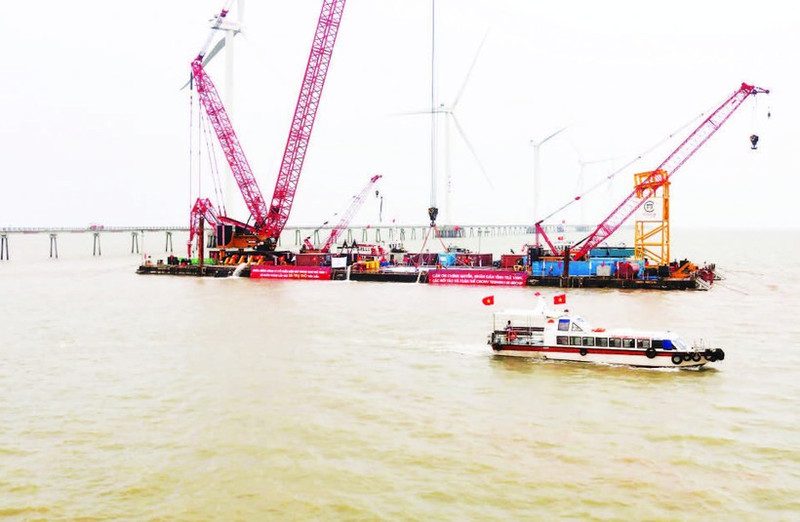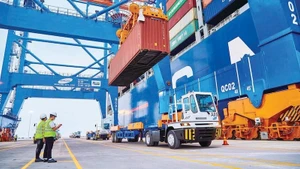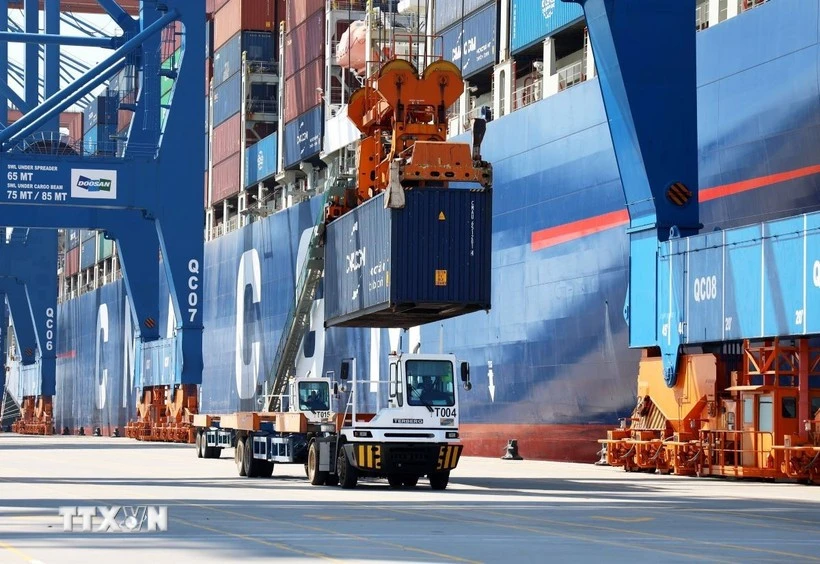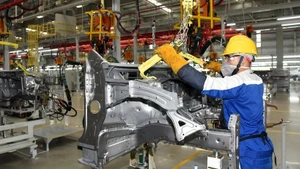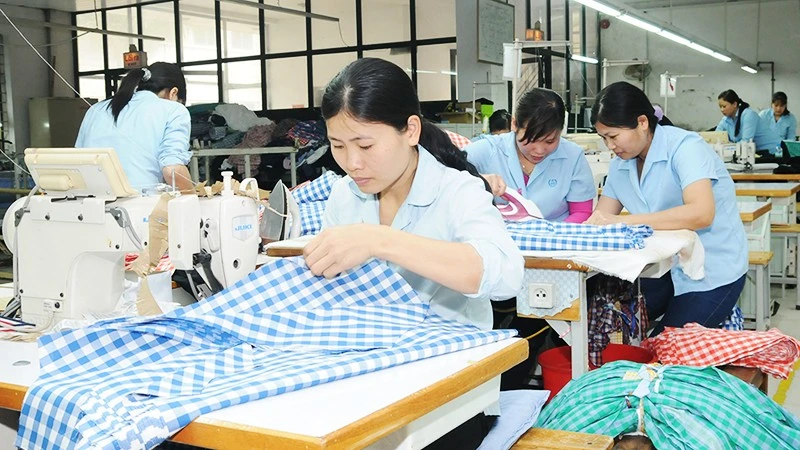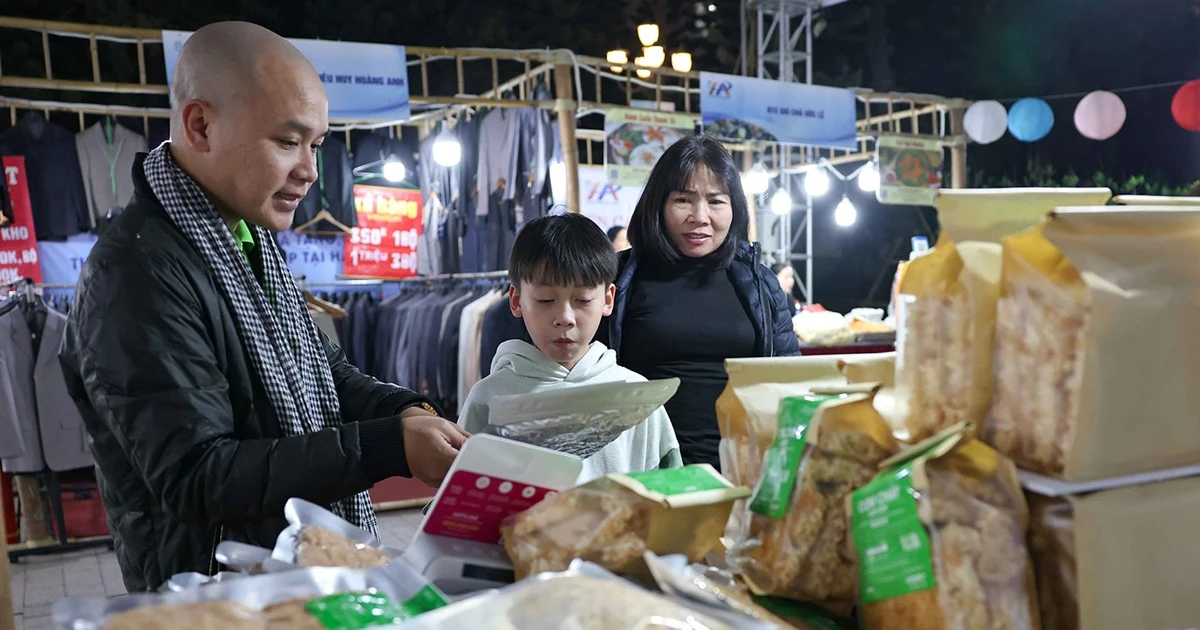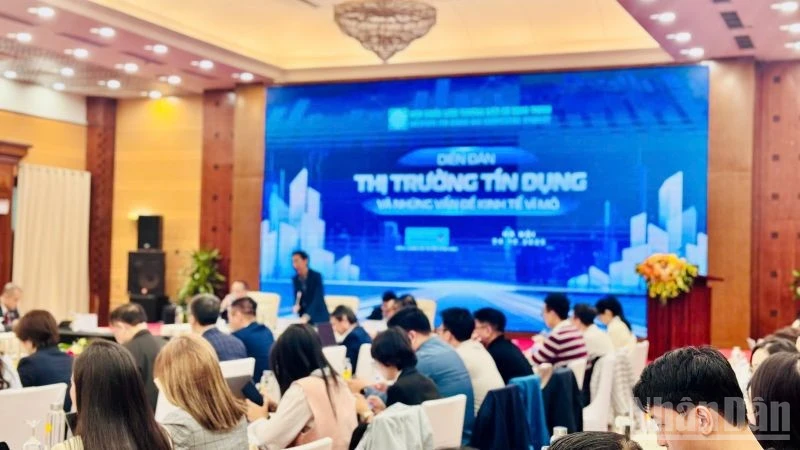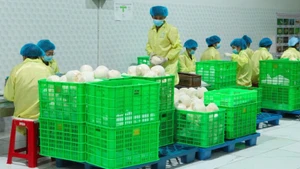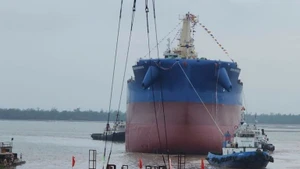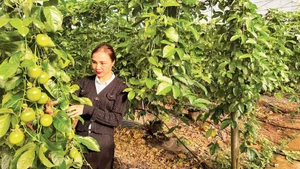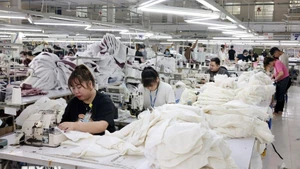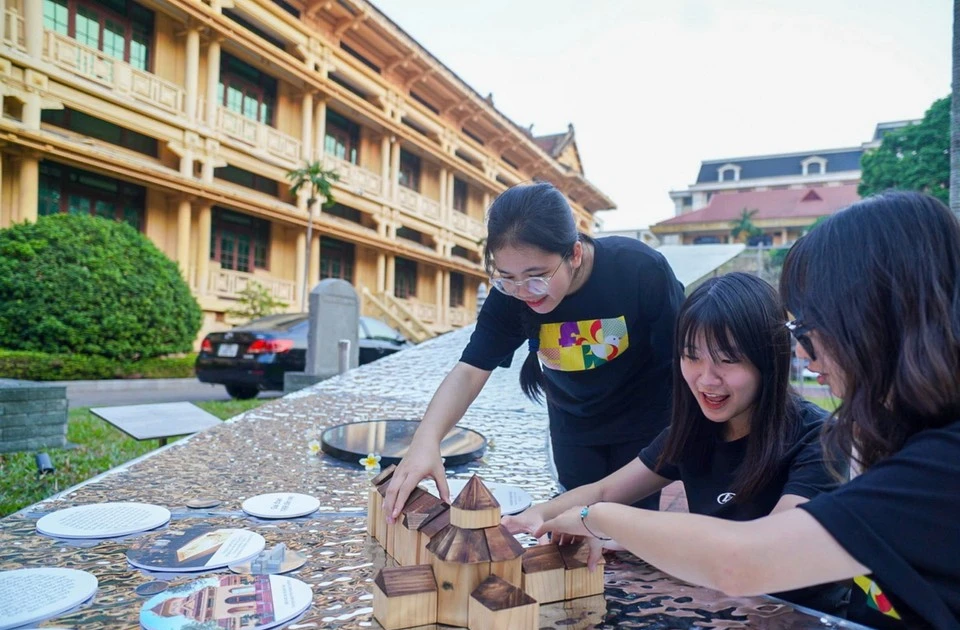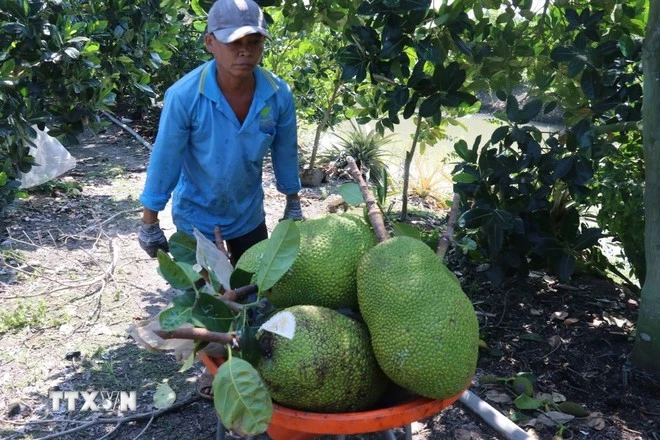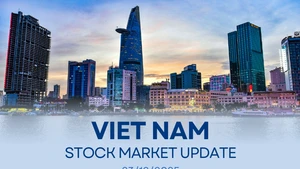Bustling wind power projects
With its long coastline, Tra Vinh is one of the localities with great potential for developing wind and solar power. A prime example is the Dong Hai I Wind Power Plant (Duyen Hai District), with a total investment of nearly VND 5 trillion (nearly 192 million USD), consisting of 25 wind turbines with a combined capacity of 100 MW.
During construction, more than 70,000 tonnes of equipment and materials were transported to the site; over 1,100 engineers and workers installed 115,000 metres of steel piles into the seabed and mounted turbines with a height of 105 metres. The project became operational in January 2021, contributing around 330 million kWh annually to the national grid.
The Korea-Tra Vinh Wind Power Plant project in Truong Long Hoa Commune is another highlight. With a total investment of 123 million USD, the project entered commercial operation in October 2021, comprising 12 wind turbines with a total capacity of 48 MW, supplying approximately 155 million kWh per year to the national grid.
In April 2025, Vingroup proposed a nearshore wind power project in Duyen Hai District with a total capacity of 3,000 MW and an investment of about 4.5 billion USD. Upon completion, the project is expected to generate around 9 billion kWh per year, bringing in annual revenue of 700-800 million USD, and creating jobs for around 500 local workers. The provincial government is working with relevant departments and agencies to propose including this project in the revised Power Development Plan VIII.
According to the national power plan, Tra Vinh has been allocated 13 wind power projects with a total capacity of 872.5 MW, as well as rooftop solar, waste-to-energy, and biomass projects with a combined capacity of 45 MW and related transmission infrastructure.
Improving marine transport infrastructure
Tra Vinh serves as the gateway to the sea for the Mekong Delta region and has received significant central government investment in key projects such as the Duyen Hai Power Centre, the waterway project for large ships to enter the Hau River, and the Dinh An general port complex.
The waterway project for large vessels entering the Hau River, with a total investment of nearly 12.6 trillion VND (483.2 million USD), was completed at the end of 2023. The project allows vessels with a draught of up to 8 metres and a full load of 10,000 tonnes to navigate the river, with an annual cargo throughput of 22 million tonnes and 500,000 TEUs of container cargo.
The coastal road linking Tra Vinh with Ben Tre Province and Tien Giang Province, with total investment of over 28.5 trillion (nearly 1.1 billion USD), is also under construction. The Dai Ngai Bridge project on National Highway 60, connecting Tra Vinh and Soc Trang, has commenced construction and is expected to be completed by the end of 2026, with a total investment exceeding 8 trillion VND (306.8 million USD).
The Dinh An Economic Zone spans over 39,000 hectares, prioritising development in energy, petrochemical industry, shipbuilding, tourism, and port services. The province has attracted 381 active projects, including 37 foreign-invested projects with total capital of nearly 3 billion USD and 344 domestic projects totalling more than 148 trillion VND (nearly 5.7 billion USD). Investors from countries such as China, the Republic of Korea, and Malaysia are already implementing renewable energy projects in the area.
Tra Vinh Vice Chairman Nguyen Quynh Thien stated that the province is focusing on attracting investment into marine economic sectors, especially aquaculture and marine exploitation linked with the processing industry. Priority is given to projects involving seafood processing and preservation, feed production, high-tech shrimp farming, and large-scale ecological shrimp farming for export.
